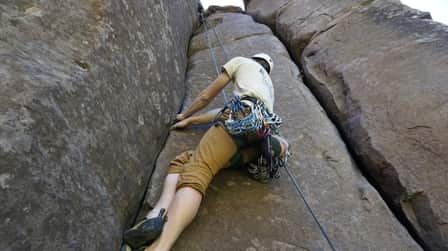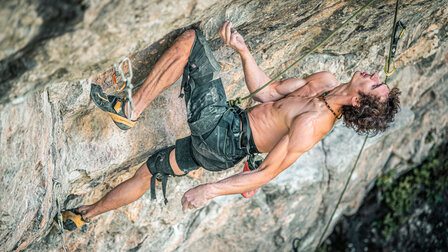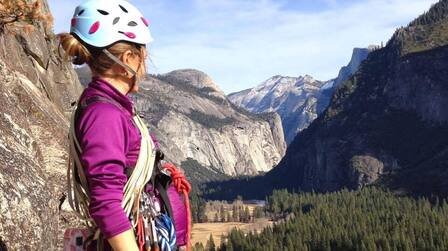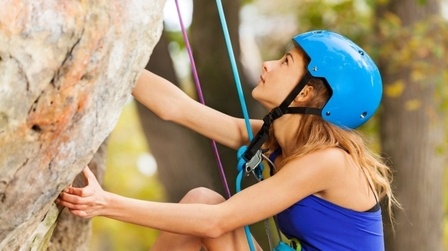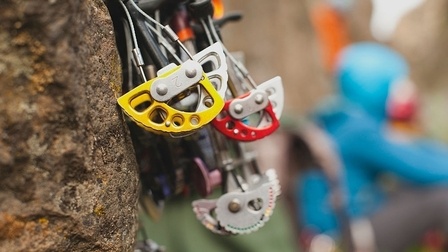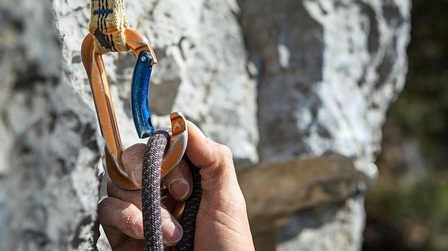If you are athletes or lovers of extreme sports, or high challenges like mountain climbing. On the website, there are always indoor climbing competitions every year with many valuable prizes and accessories for outdoor climbing. However, it also depends on the purpose and type of climbing you want to choose such as an outdoor model, complicated with many types of cliffs. Indoor models with a variety of climbing hold designs from simple to complex to help you experience the same as reality, most indoor climbing rigs with different types of climbing holds, easier when there are step-by-step instructions if you are a beginner.
On the other hand, the weather, the safety around and many other factors also affect the quality of your climb, right? Therefore, an alternative is to go to the gym or the climbing room, you can choose the subjects to practice. Furthermore, below you will find all the hands and supports that you will encounter when climbing a variety of mountains, helping you feel and more logical when climbing with this artificial terrain.
It is important to practice multiple climbing holds in different settings. In particular, you should also know more climbing techniques and develop skills by continuous practice. Below are some essential climbing grips that can greatly assist you in terms of usage to hand and foot placement techniques.
1. Foot climbing holds

From the beginning of the climb to the end of the climb, there is a tendency to forget about our feet. Simply because they are easily hidden from view, especially that vision is one of the main external cues used to make decisions. So the hands are always in the spotlight, but achieving good results and mastering the climbing technique requires a deep understanding of the versatile use of your feet. Most of the legs contain the most muscles so they take the load and take the weight off the hands, providing an efficient way to move upward by pushing rather than pulling with your hands.
Edging for climbing hold
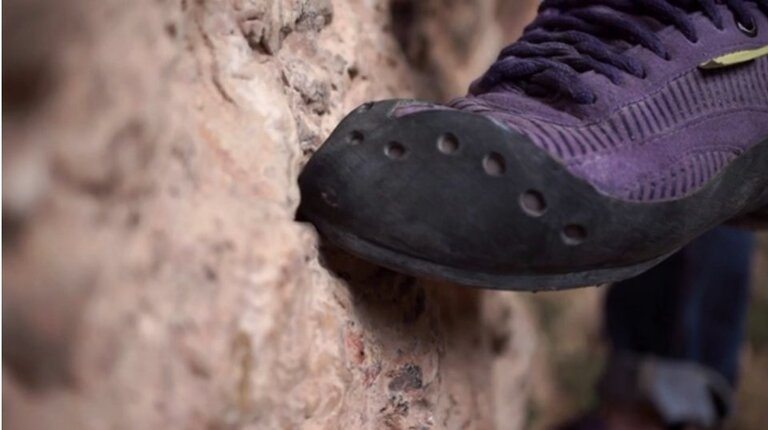
Edging involves using the edge of the shoe on a rock or climbing position. On top of that, you can use the inner or outer edge of the ridge depending on where your body and feet are in contact with the mountain surface. On the other hand, if your hips are facing the right, use the inside edge of the right foot or the outer edge of the left foot. And vice versa, if the hips are to the left, then the inside edge of the left foot or the outer edge of the right foot.
Smearing for climbing hold

Smearing is the use of the bottom of the shoe to smear the foot against the wall and the use of friction to the body's advantage. The more surface area the shoe has relative to the wall, the less likely it is to slip. This technique should be used when there is no strong foothold to be able to compete.
2. Hand climbing hold

Hands are a very important part of climbing technique. Not only are the hands positioned where the line of sight is directed, but they also provide more feedback. The skin on the hand is always in contact with the stone and helps you understand the smallest differences in the stone and know how to be flexible quickly.
Crimp for climbing hold

Crimps are one of the most common leg retention you'll see outdoors and in the gym. Depending on the ability of each person and the size of the fold, you need to use your hands to open, fold in half and fold completely. A full bend is used every time you jump against a wall, but it is easy to injure your fingers. However, it is important to note that you should master the technique of folding the arms open and half and only use the full edge folding when needed.
Jug for climbing hold

Jugs are known to be an object that helps you reduce fatigue when traveling on long trips. Often your hands will curl around the fists. They are easy to hold and great for resting positions between rocks or sports routes.
Sloper for climbing hold

Grabbing the slope with one hand is completely open and fairly flat. For you to continue to grip is friction between the rocks and the hand, meaning the larger the hand surface, the easier it is to hold. It's important to keep your forearms as close to the wall as possible because they increase the force you can put into your hands.
Pinch for climbing hold

A pinch for climbing holds is used by grasping this hold with four fingers on one side and thumb on the other side of the pinch position.
Pocket for climbing hold

In fact, pockets are difficult to hold because they can only fit one or two fingers inside. It is very difficult to pull the whole body up the wall with one finger and even seriously injures the fingers.
Gaston for climbing hold

A gaston for climbing holds is an aid you grab with your hands pointing inward towards your body. If you are right-handed, then pull your body to the left. Left-handed people pull the body to the right.
Undercling for climbing hold

For this type, the higher your foot, the better the foothold. During wall climbing, it's counterintuitive to put your hands up to hold the position with your palms facing up. This is very dangerous if you are not paying attention.
Conclusion
Although you choose a climbing model with hand or foot techniques, the first thing that you need to pay attention to is the type of alpine climbing, ice climbing, or outdoor activities, even indoors. Gym workouts have fake walls with various climbing holds textures to help you be more sensitive to the outside world.
The second thing we want to share is about the practice, although you have all the conditions to merge together, but you subjectively think that they are easy to touch, in fact you are in real contact and that's it. a whole process to come up with the most integrated climbing options that reach the top. Therefore, continuous practice helps you a lot because through these habits you can be quite sharp and come up with climbing plants faster. The third thing is to always read the climbing rules carefully according to the instructions of each area, each type of climbing, and understand each structure of climbing holds.
However, you should also note that when going to the gym, you should do the climbing holds 30 minutes before the climbing sessions so that you get used to the feeling of climbing. Especially the climbing holds that we shared above and how to use them. Hopefully through the sharing gearinstant will be able to help a lot with your climbing process. Thank you for reviewing.


